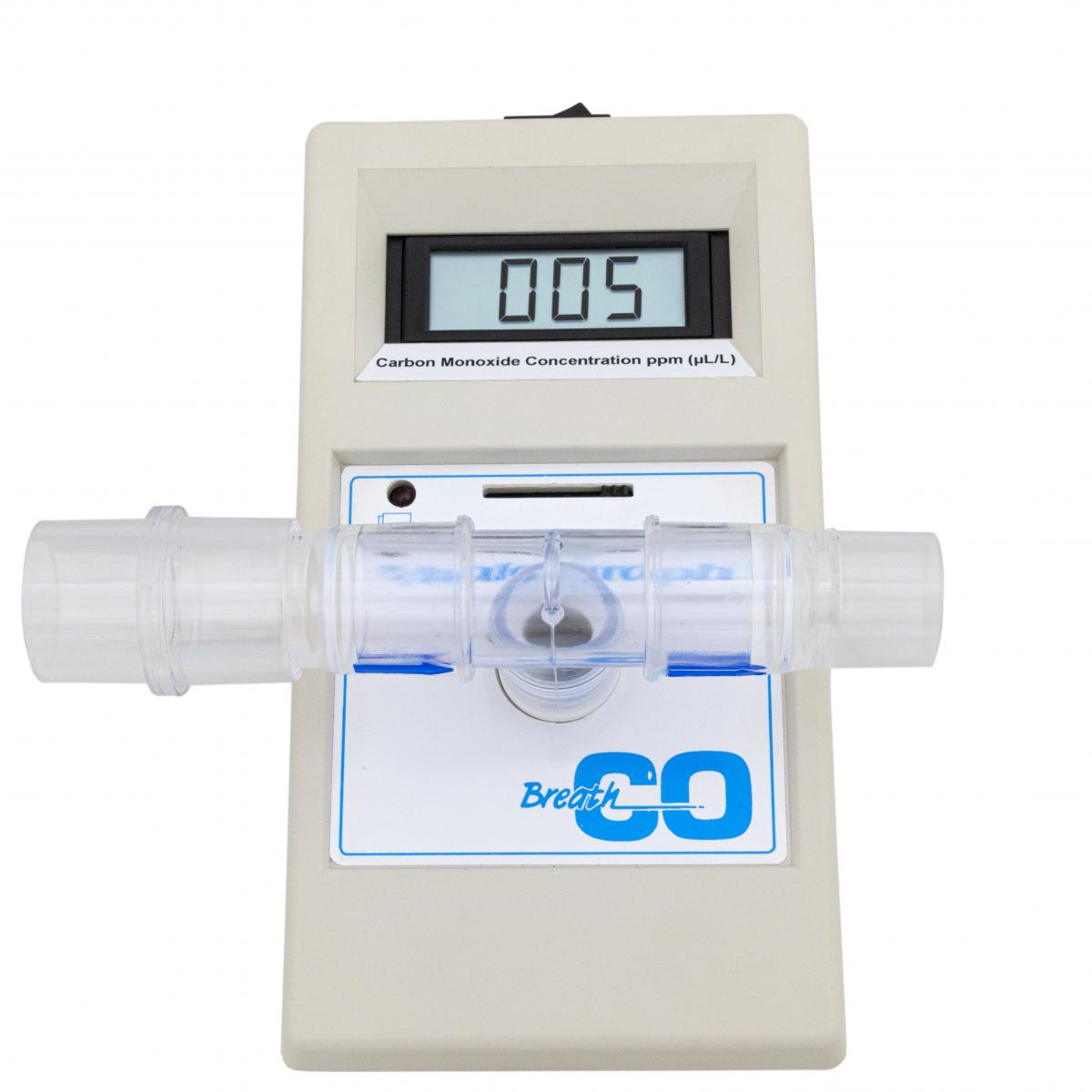Face to face tobacco cessation and CO monitoring to resume
NCSCT and Public Helth England have announced the resumption of face-to-face stop smoking consultations and carbon monoxide (CO) monitoring. CO monitoring is a valuable motivational tool for smokers. It allows people to see what their level of CO exposure is in the last 24 hours and it gives them a measure with which to chart their progress after they stop smoking. Read our article on CO testing by Dr Noel Baxter
Carbon monoxide breath test monitors
Carbon monoxide (CO) is breathed into the lungs mainly from polluted or smoky air, faulty boilers or from inhaling tobacco smoke. CO is absorbed into the blood from the lungs. It binds to haemoglobin in red blood cells about 200 times as readily as oxygen.CO starves the body of oxygen and the body needs oxygen to live.
 CO monitors measure the amount of CO in the exhaled breath in units of parts per million (ppm). The CO ppm reading informs how much CO is in the blood. The CO Hb (%) reading is the percentage of haemoglobin that is carrying CO instead of oxygen. If a CO ppm reading is 30 ppm then it means that approximately 5% of the red blood cells are carrying CO.
CO monitors measure the amount of CO in the exhaled breath in units of parts per million (ppm). The CO ppm reading informs how much CO is in the blood. The CO Hb (%) reading is the percentage of haemoglobin that is carrying CO instead of oxygen. If a CO ppm reading is 30 ppm then it means that approximately 5% of the red blood cells are carrying CO.
Smokers can have 2–20% of their normal blood oxygen taken up by CO.
The CO breath test is simple and quick to perform with instant readings. In most cases, patients are simply required to hold their breath for 15 seconds and then blow slowly (a bit like blowing up a balloon) into the mouthpiece aiming to empty the lungs fully. Devices are inexpensive and easy to maintain and available from a number of UK suppliers. All devices require maintenance, cleaning and calibration to ensure accuracy. Inexpensive consumable mouthpieces can be purchased from suppliers.
Find out more about how to introduce carbon monoxide monitors along with Very Brief Advice into your consultations.
Intermedical have provided a video on how to introduce CO testing safely.
MD Diagnostics Ltd also provide video guidance on resuming CO testing procedures along with calibration information etc.
Reference
London Clinical Senate. Helping Smokers Quit. http://www.londonsenate.nhs.uk/wp-content/uploads/2015/04/The-expired-c…
Image source: PCRS wishes to thank Vitalograph for providing an image of a CO monitor. PCRS does not endorse any specific CO monitor